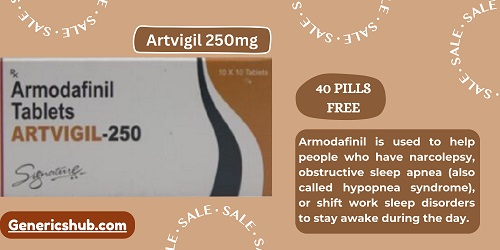Understanding Narcolepsy: A Complex Disorder
Narcolepsy, a neurological disorder affecting the brain’s ability to regulate sleep-wake cycles, presents a myriad of challenges for those diagnosed with it. Characterized by excessive daytime sleepiness, sudden muscle weakness (cataplexy), hallucinations, and sleep paralysis, narcolepsy can significantly impact an individual’s quality of life and daily functioning. As we delve into the intricacies of narcolepsy management, it becomes apparent that selecting the right medication is paramount to effectively managing its symptoms.
Exploring Medication Options for Narcolepsy
Stimulants: A Mainstay in Narcolepsy Treatment
Stimulant medications, such as modafinil and methylphenidate, are often the first line of defense against narcolepsy symptoms. By boosting wakefulness and alertness, these medications can help individuals with narcolepsy combat excessive daytime sleepiness and improve cognitive function. While stimulants can be highly effective, they may also come with side effects such as increased heart rate, elevated blood pressure, and potential for dependency.
Sodium Oxybate: Targeting Cataplexy and Fragmented Nighttime Sleep
Sodium oxybate, also known as Xyrem, is a central nervous system depressant that plays a crucial role in managing both cataplexy and fragmented nighttime sleep in individuals with narcolepsy. By promoting deeper, more restorative sleep, sodium oxybate can alleviate cataplectic attacks and improve overall sleep quality. However, its use requires careful titration and monitoring due to the risk of respiratory depression and potential for abuse.
Understanding Narcolepsy: A Brief Overview
Before delving into lifestyle adjustments, it’s crucial to grasp the fundamentals of narcolepsy. This disorder disrupts the brain’s ability to regulate sleep-wake cycles, leading to excessive daytime sleepiness, sudden muscle weakness (cataplexy), hallucinations, and disrupted nighttime sleep.
The Role of Lifestyle Changes in Narcolepsy Management
While medications like stimulants and antidepressants are commonly prescribed to manage narcolepsy symptoms, lifestyle modifications can complement pharmacological interventions, offering holistic relief and enhancing overall treatment efficacy.

Prioritizing Quality Sleep Hygiene
Quality sleep hygiene forms the cornerstone of narcolepsy management. Establishing a consistent sleep schedule, optimizing sleep environment (e.g., comfortable mattress, dark room), and practicing relaxation techniques before bedtime can promote better sleep quality and mitigate daytime sleepiness.
Strategic Napping Practices
Strategic napping can help combat excessive daytime sleepiness characteristic of narcolepsy. Short, planned naps strategically timed throughout the day can improve alertness and cognitive function, effectively managing narcolepsy symptoms without interfering with nighttime sleep patterns.
Regular Exercise for Improved Alertness
Physical activity is not only beneficial for overall health but also plays a crucial role in managing symptoms. Engaging in regular exercise promotes wakefulness, enhances mood, and improves overall well-being. Incorporating activities like walking, jogging, or yoga into daily routines can boost energy levels and alleviate daytime sleepiness.
Mindful Dietary Choices
Dietary habits can significantly impact symptoms. While there’s no specific “narcolepsy diet,” making mindful dietary choices can promote better symptom management. Avoiding heavy meals and stimulants close to bedtime, while ensuring a balanced diet rich in fruits, vegetables, and whole grains, can support stable energy levels throughout the day.
Stress Management Techniques
Stress exacerbates narcolepsy symptoms, making stress management techniques invaluable for effective symptom control. Practices such as meditation, deep breathing exercises, and mindfulness can reduce stress levels, enhance relaxation, and improve overall sleep quality.

Creating a Supportive Environment
Building a supportive environment is essential for individuals living with narcolepsy. Educating friends, family, and coworkers about the condition fosters understanding and empathy, while seeking support from narcolepsy support groups or online communities can provide invaluable emotional support and practical coping strategies.
Selective Serotonin Reuptake Inhibitors (SSRIs) and Serotonin-Norepinephrine Reuptake Inhibitors (SNRIs)
Antidepressant medications, such as fluoxetine and venlafaxine, may also be prescribed to individuals with , particularly those experiencing symptoms of depression or anxiety in conjunction with their sleep disorder. While these medications can help alleviate mood symptoms and improve overall well-being, their efficacy in directly addressing symptoms such as excessive daytime sleepiness may vary.
Wake-Promoting Agents: Emerging Treatment Options
In recent years, novel wake-promoting agents such as pitolisant have emerged as promising additions to the treatment arsenal. By targeting the histamine H3 receptor and promoting wakefulness without the stimulant-like side effects associated with traditional medications, pitolisant offers a new avenue for individuals seeking alternative or adjunctive therapies for narcolepsy management.
Tailoring Treatment to Individual Needs
When it comes to selecting the most appropriate medication for management, there is no one-size-fits-all approach. Instead, treatment should be tailored to the individual needs and preferences of each patient, taking into account factors such as symptom severity, comorbidities, medication tolerance, and lifestyle considerations. A collaborative approach involving healthcare providers, patients, and caregivers is essential to optimizing treatment outcomes and enhancing overall quality of life.
Conclusion: Navigating the Landscape of Narcolepsy Medications
Navigating the landscape of medications can be a daunting task, but armed with knowledge and guidance, individuals with can take proactive steps towards effectively managing their symptoms and reclaiming control over their lives. From stimulants to sodium oxybate to emerging therapies, the array of medication options available provides hope for a brighter, more wakeful future for those living with narcolepsy.



